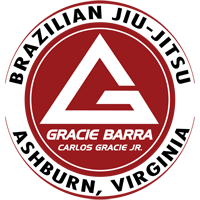Bottom Side Control
3 Essential tips for bottom side control in Ashburn, VA
During last week we worked on the side mount escape. It is very common in Jiu-Jitsu, in particular, for beginners to have difficulties in transition positions like 100 kilos (as we call it in Portuguese). The lateral control acts as a gateway to many upper positions (mount, knee on the belly, back mount) and several submissions. Those on bottom side control must understand that they should move, but only at the right time.
Not knowing what to do and spending all your energy trying to push your opponent without a goal can often be fatal, so it is important to be patient and know how to work the spaces. Eighteen years ago when I started training women were the minority on the mat. For many years I “survived” sparring rounds with much heavier partners (some twice my weight) and – although I developed strength, I learned how to work the spaces between myself and my opponent and thus create the opportunity to turn the tables.
In the case of lateral control, I almost always “gave my life” to regain my guard, but I learned that losing all my strength by pushing someone would give me no advantage – instead I would only gain exhaustion and some pain. After becoming a teacher and watching my students learn, I realized that the bottom 100 kilos position is a situation that many do not know how to move and often end up giving their back to their opponents. But what are the top 3 points to work on when trying to get out of side control? Here are 3 basic tips will help you to not struggle underneath.
1- Protect the neck, elbows and the mount: One of the most common mistakes, especially for beginners, is panicking and exposing arms and neck, as well as giving up the mount. Before attempting to escape, make sure your elbows are protected, use your hands to protect your neck and do not let your legs relax on the floor. If you don’t know how to recover the guard with the inside hip escape then don’t turn your back on the opponent- or it will result in 3 taps.
2- Bridging Is Not Power Lifting: Bench pressing your partner off of you like you are doing weight lifting will only make you tired and frustrated. Knowing how to create the necessary space with the bridge is fundamental. When you bridge to recover the guard, you’re trying to make room to slide your knee across the belly of your opponent. The secret is: when you bridge and your hips come back to the ground extend your arm and hip escape out. This way you get the under hook to take the back or recover full or half-guard.
- Be aware of where your opponents weight is: Because most of my training partners are male, I learned to “feel” my opponent’s weight. I am always trying to survive the pressure of weight and strength. I have learned to realize where my opponent is putting the weight and where he is vulnerable. Jiu-jitsu is amazing because it is the only sport where the Weakest can overpower over the strongest through techniques. Most of the time, if your opponent does not know how to use his own weight, a very common mistake happens: high hips. The high hips help the bottom opponent as it makes it easier for the guard or half guard to be recovered. When this happens, the opponent’s weight will be concentrated on his chest, so there will be more room to cross his knee and / or facilitate the reversal, especially if he is trying to pass his guard.
In closing, I really like to use one of the phrases spoken by master Carlos Gracie Jr during the first Gracie Barra conference in Campinas, SP (Brazil), “In jiu-jitsu, we fight for centimeters, not for meters”. This helps us understand that we are not always going to create big spaces, but if we know how to work the “small spaces” without being vulnerable, we can change the end of a fight.
